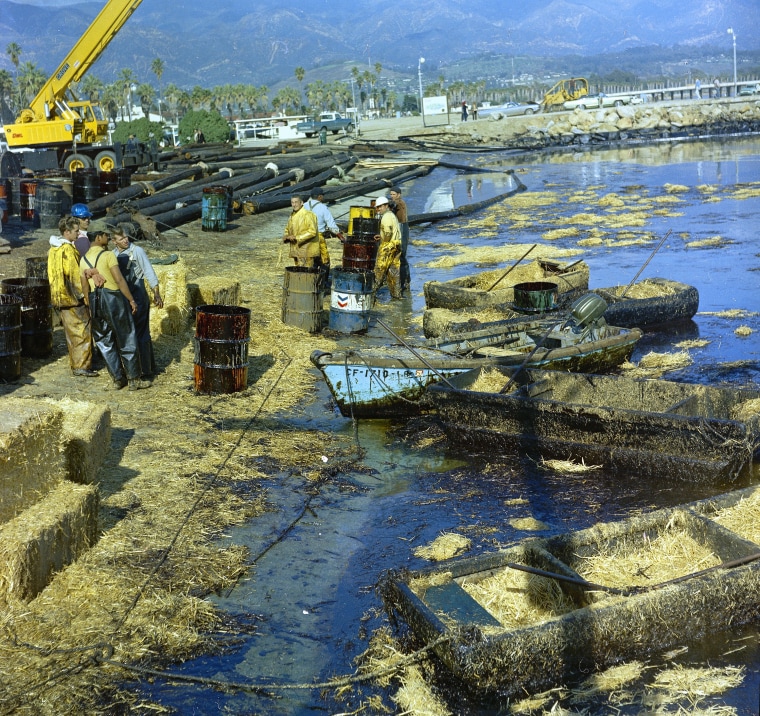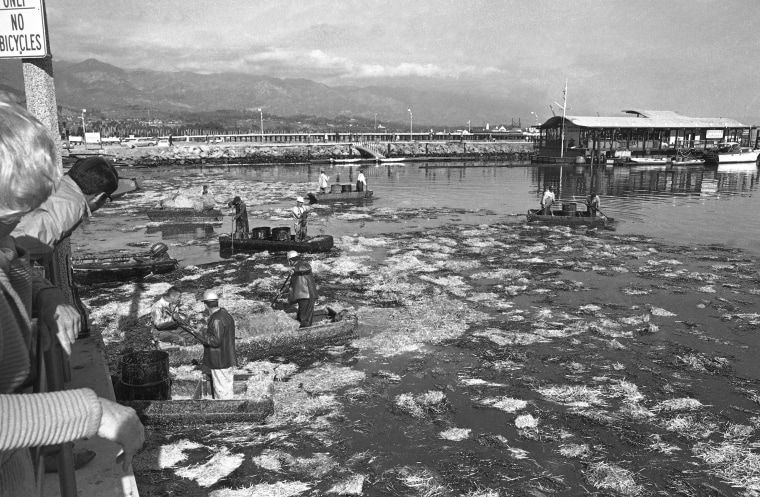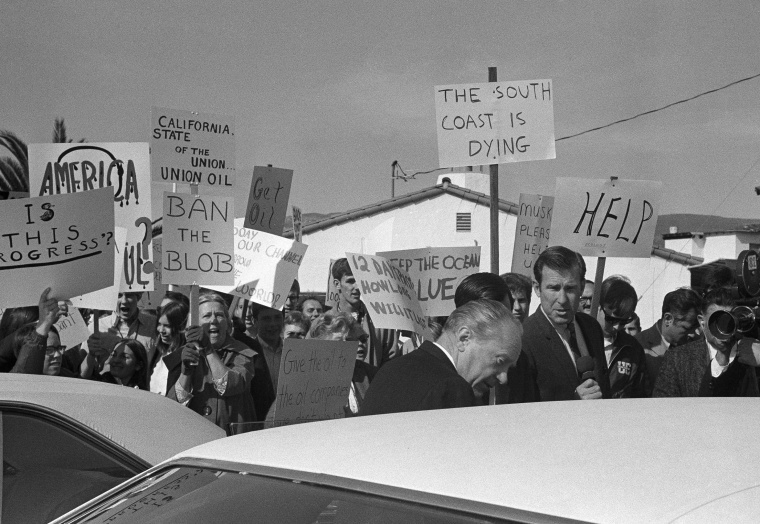At the time, it was the worst oil spill in American history: A rig ruptured off Santa Barbara, California, and sent crude gushing into the Pacific Ocean. Sea birds died by the thousands. Dolphins and seals were suffocated by the onslaught.
The oil kept flowing for a week and a half. It was January 1969, and the modern environmental movement was in its infancy.
The disaster off Santa Barbara, near the site where crews were rushing Wednesday to contain a spill estimated at 21,000 gallons, was a galvanizing moment.
The oil rig was finally capped, but, as the National Oceanic and Atmospheric Association remembered in a blog post last year, the blowout opened undersea faults, and oil and gas kept seeping into the water for the rest of 1969.


“Waves so thick with crude oil that they broke on shore with an eerie silence,” the Los Angeles Times remembered two decades later. “Thirty miles of sandy beaches coated with thick sludge. Hundreds of miles of ocean covered with an oily, black sheen.”
In all, NOAA estimates, as much as 4.2 million gallons of crude oil polluted the ocean. An estimated 3,700 birds were confirmed dead, with the population of gulls and grebes especially harmed.
There were other catalysts for the environmental movement. In 1962, Rachel Carson had published “Silent Spring,” documenting the devastating effects of widespread pesticide use. And later in 1969, towering fires raged on the Cuyahoga River in Ohio.
But the Santa Barbara spill alarmed the country. The president of Union Oil arrived in February 1969 and was heckled by demonstrators. President Richard Nixon walked the beach in March to get a sense of the damage and talk to cleanup workers.
Four months after Santa Barbara, Nixon established an environmental council in his Cabinet, and in 1970, Nixon established the Environmental Protection Agency.
The first Earth Day was celebrated that same year.
